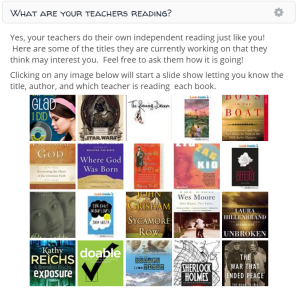It’s about that time of year, again. The time of year our thoughts, students and teachers alike, turn towards summer. If you are an English teacher, these thoughts probably include some musings over summer reading. If you missed my initial introduction and poll regarding this topic, you can check it out here. I could go on for pages and pages about summer reading, but the beauty (or trouble with) of a blog is that it lends itself to succinct writing. I will try to be pithy, but I’m afraid it’s not my strong suit.
POLL RESULTS:
If anything, last week’s poll reveals that we are a divided profession on the subject of how summer reading programs should be handled:

Results from Summer Reading Poll as of 4/18/2011
I feel as if there is no real majority of opinion, here. Technically, offering one required title, a few free choice requirements, and not requiring any written work had the most votes, but only by one vote, and even then, it is quite different from the “runner-ups” of having no formal program or offering a student created inquiry project. Beyond having a variety of opinions, many of us do not have the option of creating our “dream program” and must work within the stipulations set for us by our school systems. Regardless, we at least agree on one thing – CHOICE is key when encouraging students to read over summer break.

Visual Representation of Summer Reading Poll Results
Recognizing the variety of responses recieved by the poll, I know that not all readers are going to agree with my point of view. Keep in mind, however, that I am not suggesting that there is only one way to orchestrate a summer reading program. You know your students best, and that knowledge should play a key role in designing your own program. In the mean time, I would like to share some of my ideas with you.
FORMAT:
My school requires a formal summer reading program, but I must say that I agree with them on this one. In fact, my students once asked me why I couldn’t simply suggest that they all read over the summer and leave it at that. A very honest discussion with these students revealed that the reading enthusiasts would keep reading and the self-proclaimed non-readers would keep, well, not reading, unless their parents enforced the suggestion. The summer is a great time to put books in the hands of all students in a low-stress, independent environment in the hopes that they will learn to see how the practice of reading for pleasure may look in their own lives. With the right amount of freedom in choosing books, the practice can also help students find books, genres, and series that they like. The tricky part is holding students accountable for their reading.
In the past, I have usually required one common title because it will give my classes a common foundation from which we can pull from in our reading mini-lesson once the new school year begins. In turn, this method also helps me to justify a student-choice book unit in the first semester rather than a whole-class novel, which works well in the semi-workshop setting used in my classroom. This year, students are going to be able to choose their required title from a list of three options. They will then read two additional books that are totally up to them. In my experience, getting students to read on their own is all about choice, choice, more choice, and the availability of time and books. In summers past, I also included a small assignment to be completed on the assigned title. This year, there will still be a small assignment to be completed, however, I am offering options that cover a variety of learning styles, from visual, to auditory, to kinesthetic. This representation of their learning, whether it be a blog, collage, podcast, or other conceptulization will be applied to their choice of what they read over the summer. Once again, choice is king.
MOTIVATION
One element of reading for pleasure that becomes more evident in adult readers, in my experience at least, is the social element of reading. Too many students relegate their reading to the classroom and do not always understand the concept of a reading community. Feeling that you are a part of a community as you read can increase your tendancy to participate in acts of reading more often. One of the biggest successes I have experienced in my summer reading programs is the addition of what I dubbed “Summer Reading Socials.” Students began asking in January of this year if I would be including them this upcoming summer. The basic idea is that I placed myself at a central location (that included ice-cream!) every other week. Students could purchase a dessert on their own if they wanted to. The main idea, though, was that we were gathering in a social setting to talk about what we were reading. This was a huge success with my struggling readers in particular. You can check out the flyer I sent home with students last year for a clearer picture of what these events looked like.Summer Reading Socials. I also tried reinforce the idea of reading as a social activity through a webpage I created using google sites. It is obviously no longer updated, but you can get the general idea by visiting it here: Summer Reading 2010. To keep motivation high, I also help current students take ownership of the program by helping to create a list of options for the free-choice books. Students do not have to choose from this list, but it is nice to see what their peers have enjoyed and gives them a good place to jump off from.
Comments/Ideas/Anecdotes Welcome!






